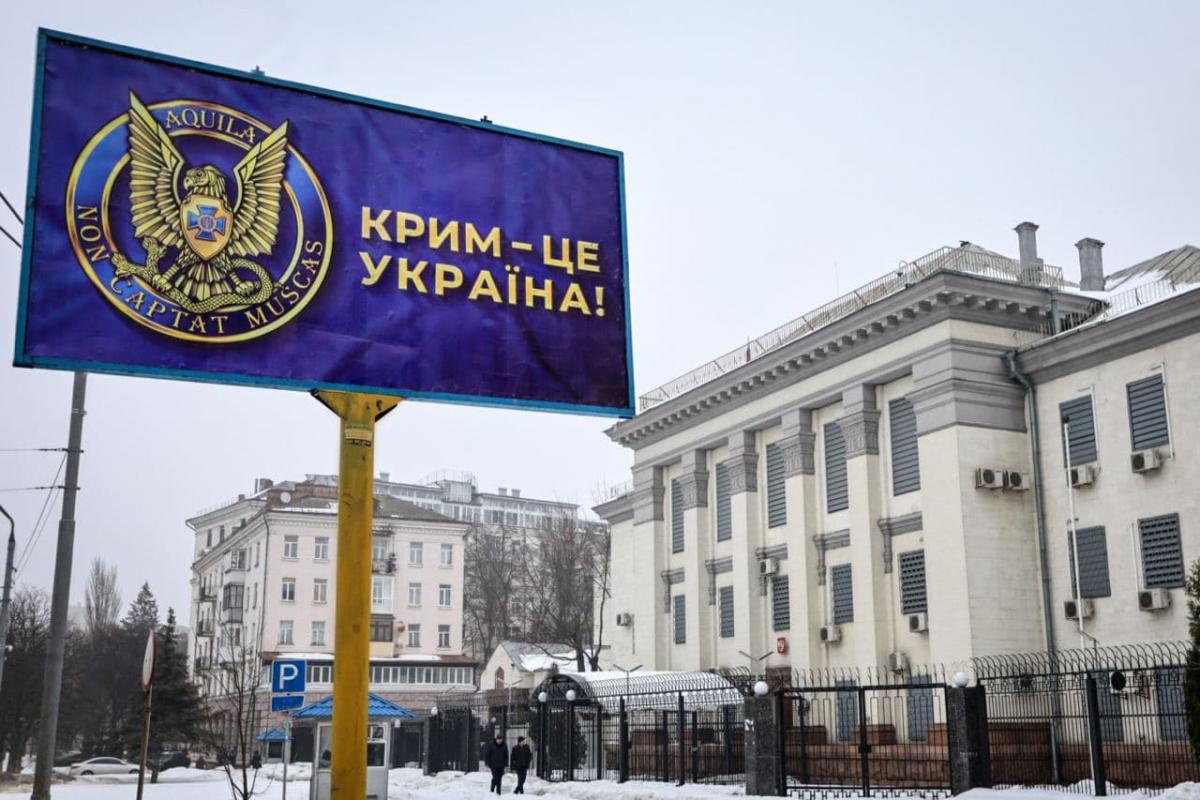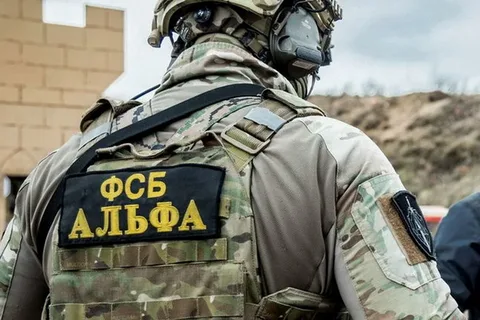1/ CONQUERING CRIMEA - PART 6
In this final thread in a short series, I'll look at the lessons that can be learned from Crimea's military history and the challenges that Ukraine might face if it wants to use force to retake Crimea.
In this final thread in a short series, I'll look at the lessons that can be learned from Crimea's military history and the challenges that Ukraine might face if it wants to use force to retake Crimea.

2/ In the first part, I looked at Crimea's military significance, its unique geography and the difficulties it presents for invaders – as well as the defensive advantages it holds for its occupiers.
https://twitter.com/ChrisO_wiki/status/1640428287200509961
3/ In the second part, I reviewed Crimea's history of invasions from the 16th to the 19th centuries, including the initial Russian conquest of Crimea in the 18th century.
https://twitter.com/ChrisO_wiki/status/1641172285967982594
4/ In the third part, I looked at the battles for Crimea in 1918 and 1920 during the Russian Civil War, when Bolsheviks, the anti-Bolshevik White movement, the short-lived Ukrainian People's Republic and Imperial Germany competed to control the peninsula.
https://twitter.com/ChrisO_wiki/status/1641895074001834002
5/ The fourth part covered Nazi Germany's immensely bloody 1941-42 invasion of Crimea. Over 500,000 Soviet soldiers became casualties along with at least 115,000 Axis troops during 10 months of bitter fighting including the eight-month siege of Sevastopol.
https://twitter.com/ChrisO_wiki/status/1645516747129192448
6/ The fifth part addressed the 1943-44 Soviet reconquest of Crimea, when the Red Army first obtained bridgeheads on the peninsula and then swept across Crimea, rapidly clearing out the occupying Axis forces.
https://twitter.com/ChrisO_wiki/status/1646248814104268800
7/ Crimea has been invaded 9 times in the past 300 years – 1675, 1736, 1737, 1771*, 1854, 1918*, 1920*, 1941* and 1944*. Four of those invasions were effectively large-scale raids for strategic advantage; the other five (* above) were mostly successful attempts at conquest. 

8/ Russia's seizure of Crimea in 2014 was more of a coup de main – its troops were already present in military bases leased from Ukraine – and was not accompanied by any significant bloodshed. However, a Ukrainian attempt to retake Crimea by force will face many difficulties.
9/ As I highlighted in the first thread, Crimea's geography makes it a difficult place to invade. There are only three narrow land routes into the peninsula. Two of them – the Chonhar Peninsula and the Arabat Spit – are reliant on bridges, while the third is a narrow isthmus. 

10/ All of these invasion routes, plus the Syvash salt lagoons north of Crimea, have been used at various times, but they also present major difficulties:
🔺 The Perekop Isthmus is narrow, flat, lacks any natural cover, and has been heavily fortified for centuries.
🔺 The Perekop Isthmus is narrow, flat, lacks any natural cover, and has been heavily fortified for centuries.

11/🔺 The bridges from the Chonhar Peninsula can easily be demolished and the narrow peninsula, as well as the opposite shore, is still studded with WW2 fortifications. The area is also completely flat and lacks any cover. 

12/🔺 The bridge to the Arabat Spit can also be demolished easily. There is no proper road along the spit, which is only 270 m (885 ft) wide at one point. Again, it's flat and completely exposed, and is particularly vulnerable to naval or air attack from the Sea of Azov. 

13/🔺 The Syvash is in most places too shallow for conventional boats, too wide to swim and too deep or too muddy to wade. It's possible to cross in certain places but only at certain times and on foot, without heavy equipment, any concealment or any cover from air attack. 

14/ Russia is clearly well aware of these defensive advantages and has made systematic efforts to refortify these areas. New fortifications are visible in satellite images and have been mapped (see map linked below).
google.com/maps/d/u/0/vie…
google.com/maps/d/u/0/vie…
15/ Notably, the Russians appear to be refortifying the “traditional” invasion routes along the Perekop isthmus and Chonhar peninsula as well as building a line of fortifications behind the entire north Crimean coastline, presumably to block any crossings of the Syvash. 

16/ The experience of World War II, in particular the Axis invasion of Crimea in 1941-42 and the Soviet reconquest of 1943-44, is highly relevant to the current situation – although there are some very important differences that are worth highlighting.
17/ The Russians are now likely in a stronger defensive position in Crimea than the Soviets were in 1941 or the Axis was in 1943. The Ukrainians are certainly far weaker compared to their opponents than the invading Wehrmacht was in 1941 or the Red Army was in 1943-44.
18/ The 1941-42 invasion was accomplished without air or naval superiority. The Germans were able to breach the deep Soviet defences at Perekop and Ishun due to strong artillery and engineering support, well-trained and experienced troops, and effective combined arms tactics. 

19/ They also had much better leadership than the Soviets, and the Red Army's Crimean force suffered from poor morale and ethnic discontent (particularly among non-ethnic Russian soldiers) that the Germans successfully exploited.
20/ The 1943-44 invasion did take place with Soviet air and naval superiority, although this wasn't used very effectively anywhere other than Perekop, where Soviet aircraft devastated the defending Axis forces and a Soviet amphibious landing forced the Axis into retreat. 

21/ Notably, the Germans were unable to prevent the Soviets crossing the Kerch Strait to invade Crimea from the east – an important lesson for the present day. Even if Ukraine was able to retake Crimea, it would face a constant threat of Russian invasion from across the strait. 

22/ In both invasions, once the peripheral defences were overcome, the invading forces were able to very rapidly advance across Crimea. The peninsula's flat, arid interior has few defensible places other than Sevastopol, the southern mountains and the Ak-Monai line in the east. 

23/ Russia’s defensive plan for Crimea is clearly to block the Ukrainians in the far north of the peninsula, keeping them well away from the vulnerable interior. The new fortifications already appear to be more extensive than those installed by the Soviets or the Axis in WW2.
24/ Crimea can be resupplied by multiple land and sea routes – the ports of Yevpatoriya, Sevastopol, Yalta, Feodosiya and Kerch can all be used for resupply, and the Kerch bridge provides high-volume rail and road fixed links to Russia. 

25/ In 1943-44 the Germans used merchant shipping and landing craft that were originally built (but never used) for the invasion of Britain to cross the Kerch Strait, resupply Crimea and evacuate their forces. Neither the Germans nor Soviets were able to interdict the sea routes. 

26/ Ukraine is very unlikely to be able to blockade Crimea's ports. It has no significant naval capability to counter the Russian Black Sea Fleet, and no naval presence at all in the Sea of Azov. The modern Black Sea Fleet is more powerful than its 1940s equivalent.
27/ Port installations can certainly be struck with long-range missiles, but World War 2 demonstrated that ports (like Cherbourg, in the picture below) can remain operational even after suffering heavy damage from massive aerial bombardment, shelling and sabotage. 

28/ While Ukraine did succeed in severely damaging the Kerch bridge in 2022, that has now been repaired and the same method of attack is unlikely to be repeatable. It does not have the means to attack the bridge by air or with long range artillery. 

29/ The oft-mentioned ATACMS missile is unlikely to be effective at destroying the bridge due to its relatively small warhead (160-560 kg). US experience suggests that large (1000-2000 lb) guided bombs would be needed (see thread below).
https://twitter.com/ChrisO_wiki/status/1530225558096949251
30/ Crimea’s internal lines of communication are far better now than they were in the 1940s. It has the same railway lines, but its principal roads are now modern asphalt highways and no longer the dirt tracks that caused so many problems for earlier armies. 



31/ Amphibious landings appear to be impossible. Ukraine reportedly only has one large landing craft, and such an effort would be suicidal without naval or air support. Russia has also been fortifying the coast against any conceivable amphibious attacks. 

32/ Ukraine's air power is far less than that of Russia, which has many air bases in Crimea. Neither side currently has air superiority, due to the strength of their respective anti-aircraft defences – though Ukraine's defences may be more fragile than Russia's.
33/ Ukraine's options for retaking Crimea by force appear to be much the same as the Germans' in 1941 – a combined arms frontal attack at Perekop with heavy artillery, assault troops and combat engineers clearing the obstacles. 

34/ However, the German experience showed that heavy casualties would be very likely with such an approach. They suffered 12,000 casualties in the battle for Perekop and Ishun. Modern weapons would likely inflict an even heavier toll on an attacker.
35/ It's also worth noting that the German victory at Perekop in 1941 was quite a close-run thing. The Soviets put up strong resistance, despite their disadvantages, and could conceivably have held off the Germans if they had been better led.
36/ The Russians would certainly resist more strongly than the Soviets did in 1941, when they were weakened by months of gigantic defeats and retreats. The Soviets viewed Crimea and its "Hero City" of Sevastopol as being sanctified by the 700,000 casualties they suffered there. 

37/ Even today, Crimea's soil conceals uncounted numbers of Russian war dead. As recently as 2018, a previously unknown mass grave of Red Army soldiers was discovered at the Tatar Ditch near Perekop, where they had been killed in the 1 November 1944 assault on the Axis defences. 

38/ Modern Russia has fetishised World War II, including the 1944 reconquest of Crimea, as a central element of Putin's nationalist ideology. Putin has presented Crimea's 'recovery' in 2014 as a crowning achievement. He can certainly be expected to fight very hard to retain it. 

39/ This is not to say that conquering Crimea is likely to be impossible for Ukraine – but military history suggests that it would likely be a very costly and difficult exercise that would have a high risk of exhausting Ukraine's military resources. /end
• • •
Missing some Tweet in this thread? You can try to
force a refresh









